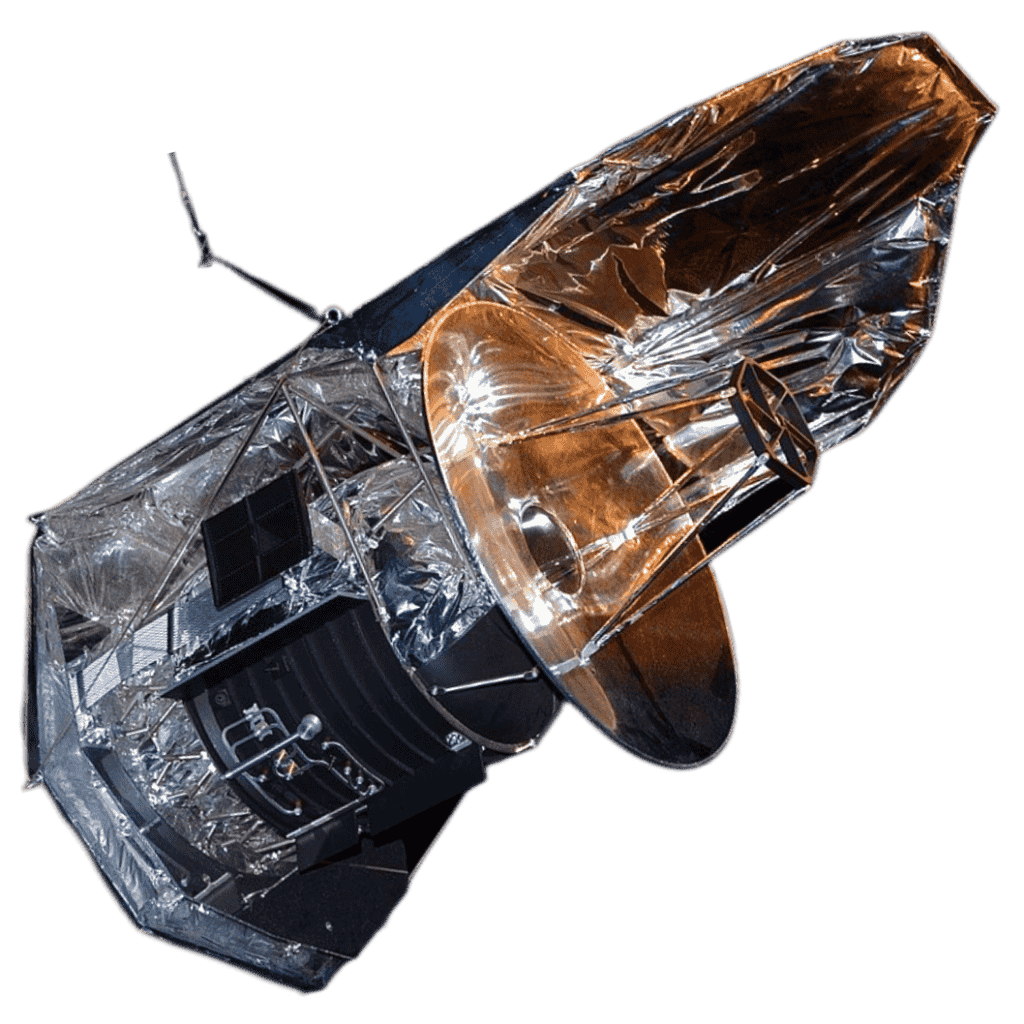Herschel Space Observatory
Far-Infrared Giant
Largest far-infrared telescope for studying star-forming regions

USPs
- 3.5-meter mirror, largest of its kind at launch
- Studied star-forming regions and galactic evolution
- Discovered water in comets
- Mapped cold dust and molecular clouds in galaxies
- Operated at extremely low temperatures (0.3 K) for high sensitivity
- Revealed the chemistry of interstellar medium
- Enabled multi-tiered extragalactic surveys (HerMES)
- Provided key data for understanding star birth and galaxy formation
Major Milestones
- 2009-05-14: Launched aboard an Ariane 5 rocket from Kourou, French Guiana, alongside Planck, initiating its mission to study the universe in far-infrared and submillimeter wavelengths.
- 2009-06-14: Reached the L2 Lagrangian point and began cooling its 3.5-meter mirror to 0.3 K using liquid helium, enabling sensitive infrared observations.
- 2009-10-12: Released its first scientific images, capturing star-forming regions and galaxies with its SPIRE and PACS instruments.
- 2010-05: Completed its initial performance verification phase, confirming its ability to detect cold dust and gas in the early universe.
- 2011-03: Published the first results from the Herschel Multi-tiered Extragalactic Survey (HerMES), revealing distant star-forming galaxies.
- 2012-04: Exhausted its liquid helium coolant, ending the cryogenic mission phase but continuing limited observations with two instruments.
- 2013-03-06: Released the final major data set, providing detailed maps of cold cosmic dust and molecular clouds.
- 2013-06-17: Concluded its science operations, with the spacecraft placed in a heliocentric orbit to avoid interference with other missions.
- 2014-01: Data archive made fully public, enabling continued research into galaxy evolution and star formation.
- 2025-07-17: Data continues to be analyzed, influencing ongoing studies of the cold universe and complementing newer infrared missions.
Cosmic Portrait
Herschel Space Observatory: Far-Infrared Explorer
Herschel Space Observatory, launched by the European Space Agency (ESA) in 2009, was the largest infrared space telescope ever flown. With its 3.5-meter mirror, it was designed to explore the coldest and most hidden parts of the universe—regions where stars and galaxies are born.
- Scientific Mission: Herschel observed in the far-infrared to submillimeter wavelengths, allowing it to penetrate dust clouds and unveil star-forming regions, interstellar dust, and the dynamics of galaxy evolution. It mapped complex molecular clouds and tracked the life cycles of stars.
- Orbit Advantage: Positioned at the second Lagrange point (L2), Herschel operated in a stable and cold environment, far from Earth’s infrared noise. This location allowed its detectors to achieve the sensitivity needed for detecting faint cosmic heat signatures.
- Key Discoveries: Herschel identified water vapor in comets, offering clues about Earth’s water origins. It studied dusty galaxies in the early universe, contributing to our understanding of how galaxies formed and evolved. It also helped trace how stars enrich the cosmos with heavy elements.
Legacy and Impact
Though its operations ended in 2013 after running out of liquid helium coolant, Herschel's contributions to infrared astronomy are enduring. Its data archives continue to power new research, especially in stellar formation, planetary systems, and the structure of galaxies.
Herschel bridged the observational gap between longer-wavelength radio telescopes and shorter-wavelength optical observatories, opening a unique window into cold, dusty cosmic environments previously inaccessible to astronomers.
Herschel peered into the coldest corners of the cosmos, uncovering the secrets of stellar nurseries and the dusty engines of galactic growth.
As a cornerstone of far-infrared space astronomy, Herschel laid the groundwork for future missions like the James Webb Space Telescope and SPICA, solidifying ESA's role in pushing the boundaries of cosmic discovery.
Fun Fact
Herschel’s mirror was larger than Hubble’s, optimized for far-infrared!